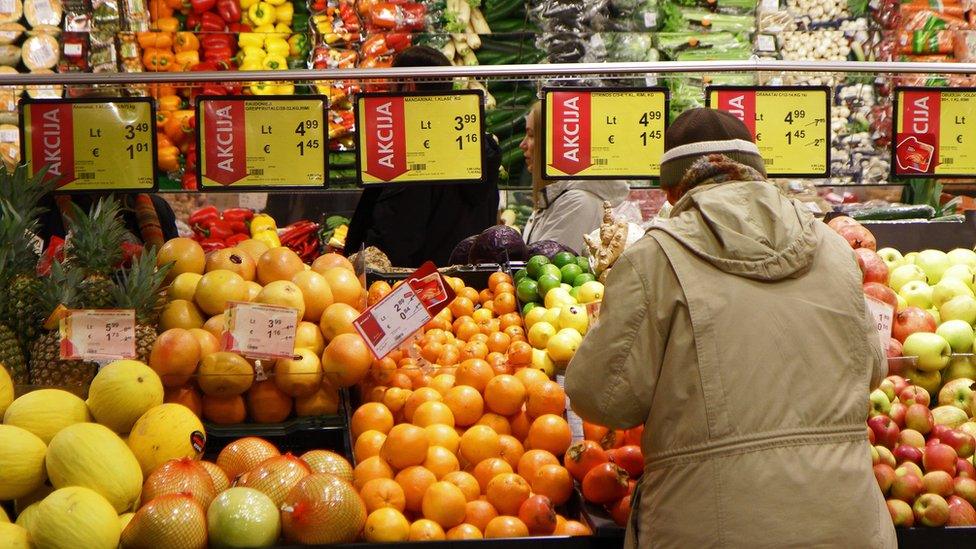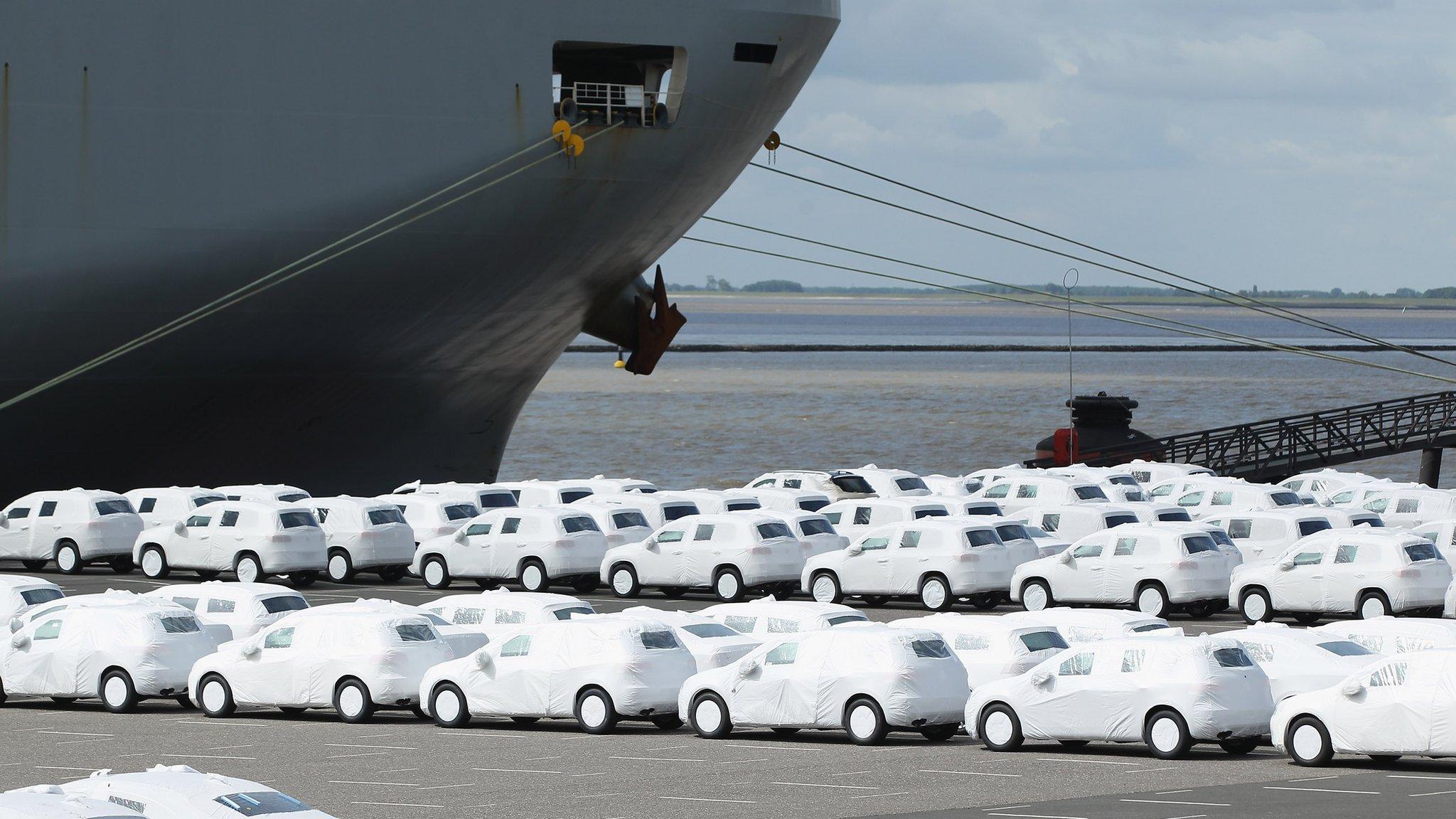Eurozone returns to deflation in September
- Published

Deflation returned to the countries that use the euro in September as prices fell at an annual rate of 0.1%.
It is the first time inflation had turned negative for six months, with an 8.9% fall in the price of energy largely responsible for the decline.
Core inflation in the eurozone, which strips out energy and food prices, showed a 0.9% rise, the same as August.
The Eurostat statistics agency also said the eurozone's unemployment rate for August was unchanged at 11%.
Mario Draghi, the president of the European Central Bank (ECB), warned earlier this month that inflation could turn negative.
The bank expects inflation to be 0.1% in 2015 as a whole, rising to 1.5% in 2016 and 1.7% in 2017.
The ECB is spending €60bn (£44bn) on asset purchases, under its programme known as Quantitative Easing (QE), every month for the next year in an attempt to boost prices.
Losing impetus
Despite some growth and inflation in the first half of the year there are signs the recovery is losing its impetus.
Some economists fear the slowdown in the Chinese economy could seriously damage the European and US economy.
On Wednesday the Bank of Spain said that it expected economic growth there to slow from 1% to 0.8% in the third quarter, and that the recovery in the jobs market had tailed off over the summer.
The prospect of deflation and a slowing economy increases pressure on the ECB to increase QE or carry it beyond September next year.
Timo del Carpio, European economist at RBC Capital Markets, said: "The [ECB's] governing council will look to cement expectations over the continuation of its asset purchase programmes beyond their nominal end-date of September 2016.
"However, it may not be until the December meeting... that the governing council is prepared to make such a judgement."
After the news the euro weakened against the dollar to $1.1209 from $1.1252 on Tuesday, a fall of 0.35%.
- Published8 September 2015

- Published3 September 2015
